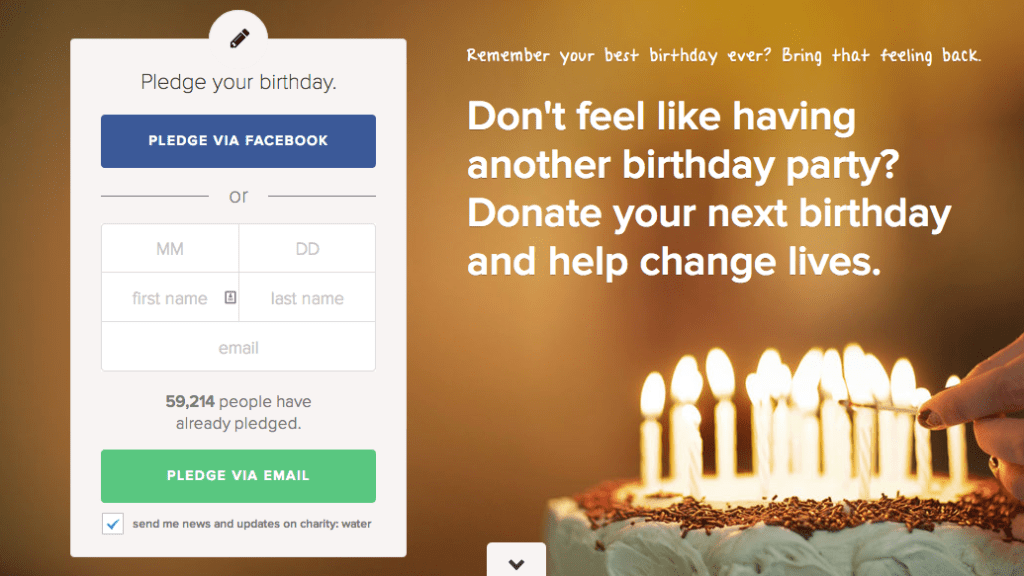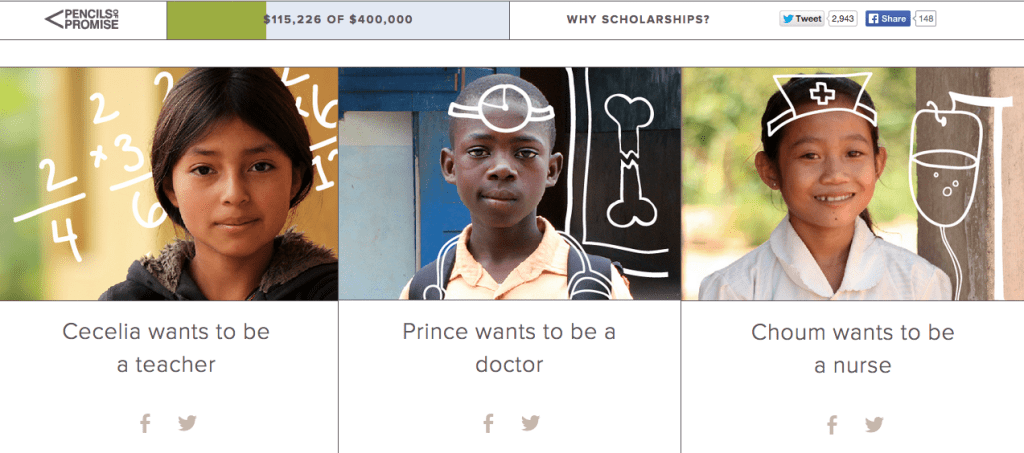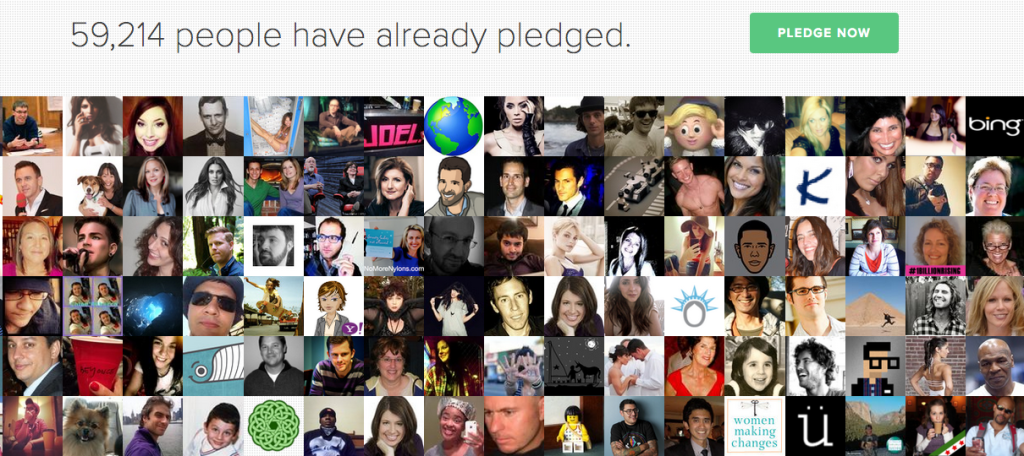Have you ever considered how Growth Hacking can go beyond startups and truly change the world? We’ve seen what Growth Hacking can do for the media in examples like BuzzFeed and Upworthy but rarely do we talk about Growth Hacking in industries beyond tech. For someone new to Growth Hacking, you could quickly come to the conclusion that Growth Hacking is something that doesn’t work beyond this space. But we know that’s wrong.
From the outside looking in, a lot of people think of me as a serious capitalist driven business professional. In reality, that’s fairly accurate but I have a soft spot for charities and the work that many great non-profits do around the world. I’ve worked with more non profit organizations over the years than I can remember as a paid consultant or just because I wanted to give back. In that time, I’ve learned a lot. I’ve learned how non-profits operate, I’ve learned the importance of quick wins and I’ve learned how to take content and growth hacking lessons and apply them to each situation.
In this post, I’m going to share with you a few of the fastest growing non profit organizations and the growth hacks they’ve used to grow quickly. Whether you’re a non profit or a venture backed startup looking to take over the world, the insights here can be applied to any business. If you want to grow and want to grow quickly, these tactics should give you inspiration for new strategies and opportunities within your space.
Growth Tactic: Charity Water – The Birthday Pledge
If the internet has shown me anything in the last few years, it’s that people REALLY care about their reputation.
People don’t want to be seen as selfish. People want to be seen as kind, giving and for the most part, just an overall good human being. It’s the reason why millions of people felt obligated to dump ice water on their heads after being nominated by their friends. It’s the reason millions of people change their photos to raise awareness for this cause and that disease.
Call it slacktivism. Call it whatever you want. But you also have to admit that it works.
The idea of pledging your birthday for a cause leverages this human truth in a way that drives real results for non profit organizations around the world. Whether we’re looking at Charity Water and the year that Justin Bieber wanted people to donate for his 17th birthday or Sophia Bush giving up her 30th birthday to raise funds on behalf of Pencils for Promise; the strategy has worked time and time again.
The reason this strategy works is because it’s built on two key insights associated with social causes and donations:
1. Social Pressure: The first reason it works is because it pushes the act of doing good from the person who first initiates the campaign to their friends and family members. As such, there is a sense of social pressure being applied to the individuals friends similar to the nominations that took place with the ALS ice bucket challenge.
2. Self Presentation Theory: Self-presentation is behaviour that attempts to convey some information about oneself or some image of oneself to other people. This act makes you look so selfless! In reality, it’s very unlikely that you still get birthday gifts from all your friends. This campaign allows for you to tell a story about yourself in which you’re rejecting all gifts with the intent of doing something good. As a result, you’re able to feel good about yourself and unselfish. The same way it was unselfish to dumb a bucket of ice on your head to raise awareness of ALS.
If you can combine these two elements, you’re destined to create a campaign that will drive success.
Growth Tactic: Pencils For Promise – Click To Tweet Their Story
Just look at their faces. How could you not be engaged by something like this?
Kids with dreams. C’mon man.. #ShutUpAndTakeMyMoney
When you can inspire someone or pull on their heart strings, it’s more likely that they’ll take action and share. An assistant professor of marketing at the Wharton School of Business, Jonah Berger specializes in discovering what makes ideas and products go viral. He co-authored a research paper with Katy Milkman called “What Makes Online Content Go Viral?” and found that:
Content that evoked high arousal emotions—positive or negative—is more viral than content without emotion.
Content that drives and evokes high arousal emotions are those that drive the most shares. When you look at the photos of the children with dreams, you can’t help but feel emotion (unless you have an icebox for a heart). As such, the placement of “Tweet this” or “Share on Facebook” is brilliantly placed as it’s constructed at a time in which emotion is at a high point.
Growth Tactic: Multiple Charities – Influencer Endorsement
In 2010, a team of Dutch researchers headed by Mirre Stallen showed why famous faces and celebrities sell. The study found that when women were exposed to images of shoes paired with faces of celebrities (vs. non-famous women), the areas of their brains involved in processing emotional stimuli were more likely to become activated. That is, positive feelings toward celebrities transferred onto positive feelings toward the shoes. Furthermore, participants said they’d be more likely to buy the shoes associated with celebrities.
Upon visiting the Birthday Pledge page for Charity Water, I was met with a handful of familiar faces. From NYT bestselling author of The Happiness of Pursuit & The $100 Startup, Chris Guilliebeau to Iron Man Mike Tyson; there were familiar faces every where. I’m sure you can look at the collage of faces above and see 2 or more faces of people you follow online or have seen in the media.
This is a simple tactic but one that can be easily replicated in business. The simple psychology behind this is connected to the idea of credibility and social connection. If you feel a connection with any of the individuals in the collage above or trust them in any way, you’re more likely to assume this is a site that will serve you well. In business, this can be replicated in the form of testimonials or case studies.
Bonus Approach: Constantly Tell A Powerful Story
Now that you have three quality tactics to drive growth in donations and awareness, it’s time to cross your T’s and dot your I’s. What’s that mean? It means ensuring that you’ve identified your story and can ensure that it’s a story that resonates effectively with your target audience.
If your cause and story aren’t resonating with the interests of your audience, they’ll likely never donate. It doesn’t matter how many growth hacks you implement if you don’t have a story that connects with people and resonates with what they care about or are interested in.
Kiva.org is an example of a non profit organization that focused on telling a powerful story from the beginning. The team behind Kiva understood early on that the stories behind the individual people their lenders would support were the most important piece of their success. The story of a student who started and grew a thriving business or the story of a single mother who could now support a family because she had the funds to start a business was the key to their success. Jessica Jackley, the founder of Kiva.org said it best,
These stories are what connect lenders to entrepreneurs, and they have the power to create an interaction based on dignity and respect and partnership, not one focused on suffering or pity or the need for a wealthy donor to swoop in and singlehandedly save the day.
There are so many advantages to telling a compelling story. You connect with your audience. You increase the likelihood of sharing. You develop loyalty. You drive more visits. And you stand out in a world filled with noise and constant distraction.Storytelling is a beautiful thing when done right. Combine it with some of the growth driven tactics discussed above and you’ll quickly be able to stand out and achieve your goals and objectives for the year.
What other non profits are using technology in creative ways? What other tactics could they use to achieve success?



